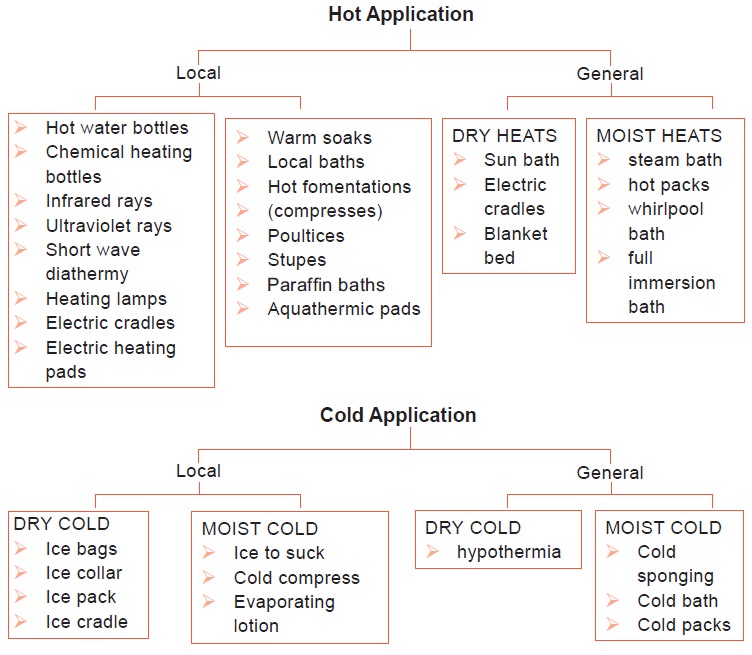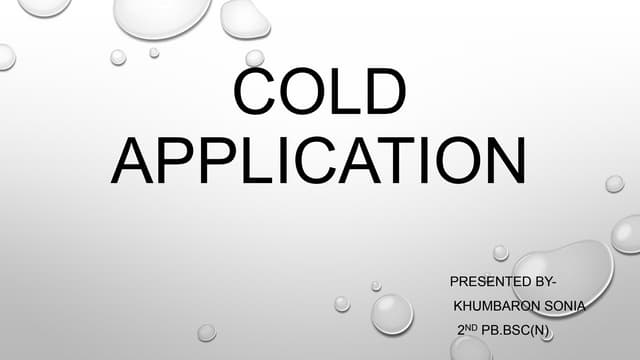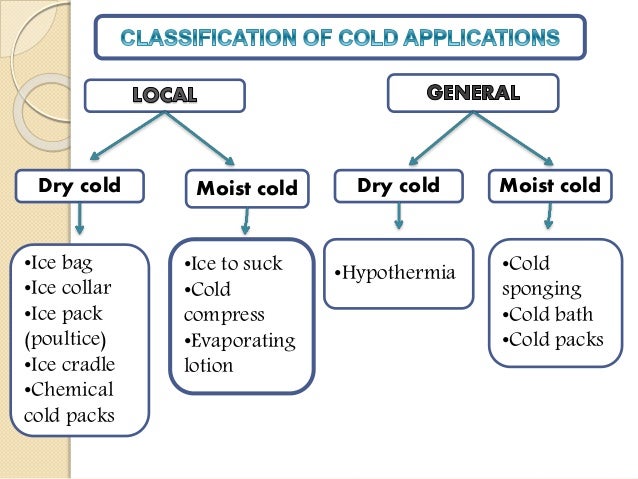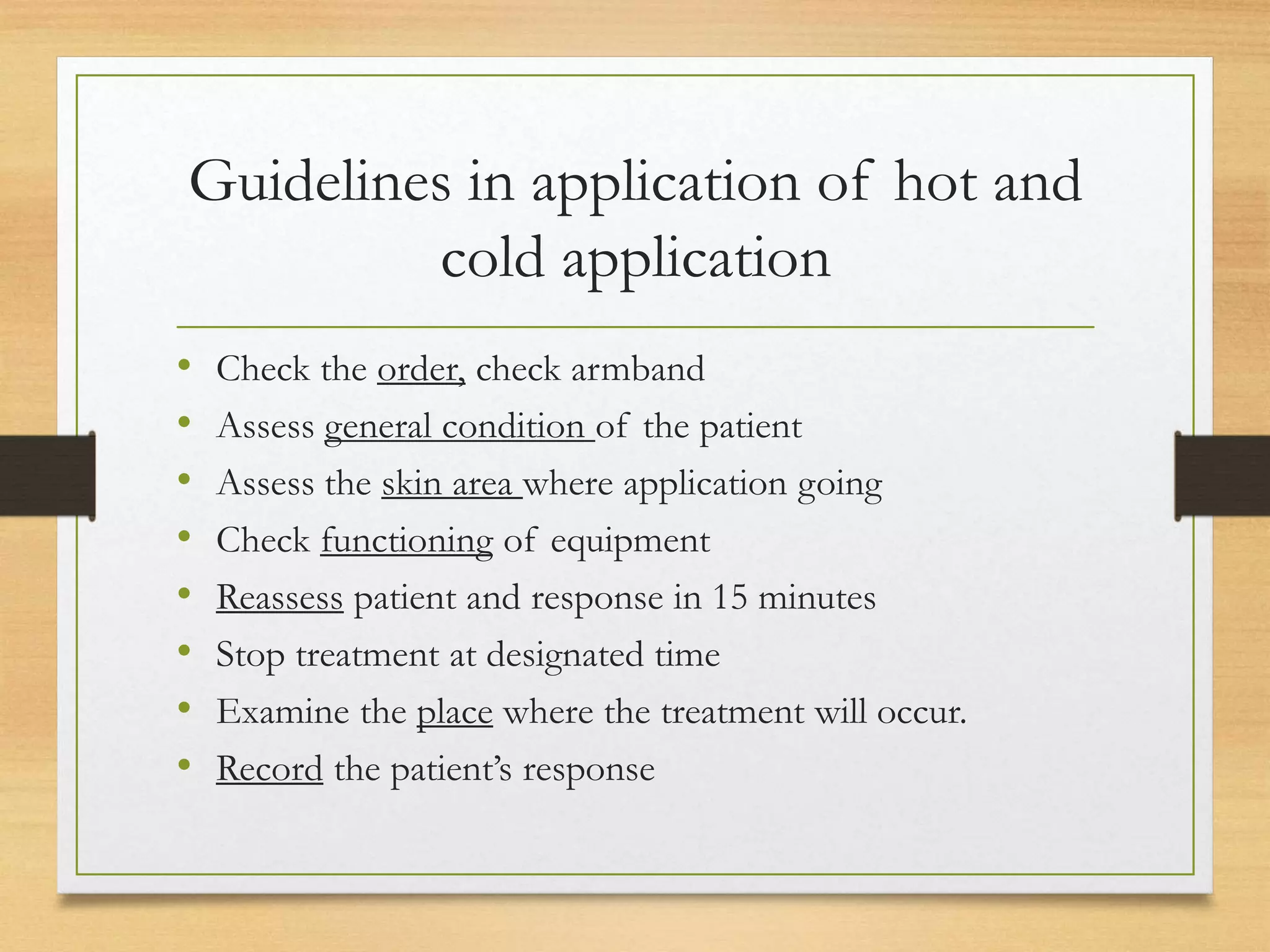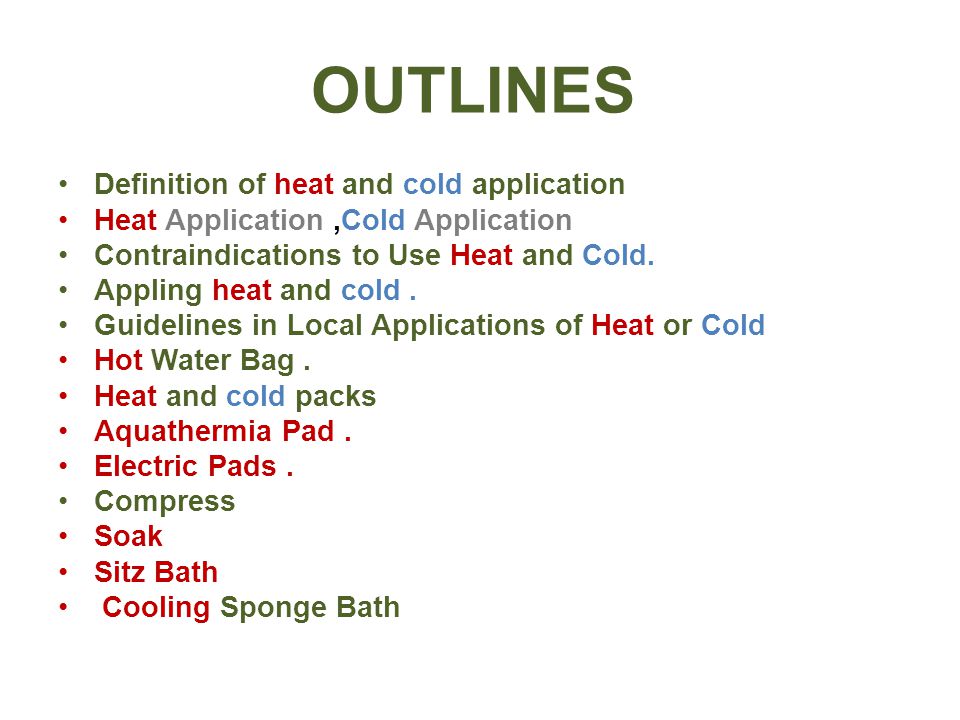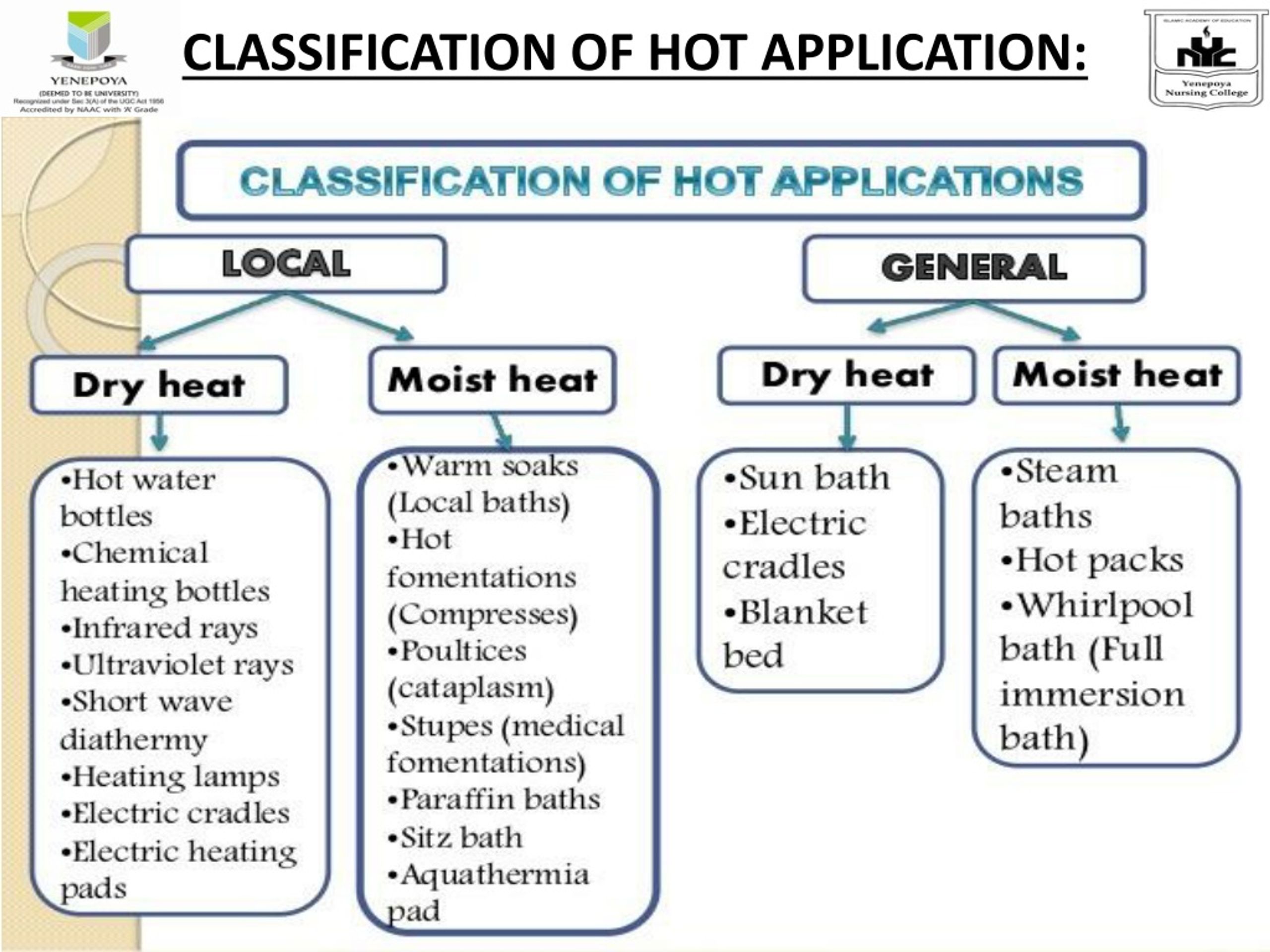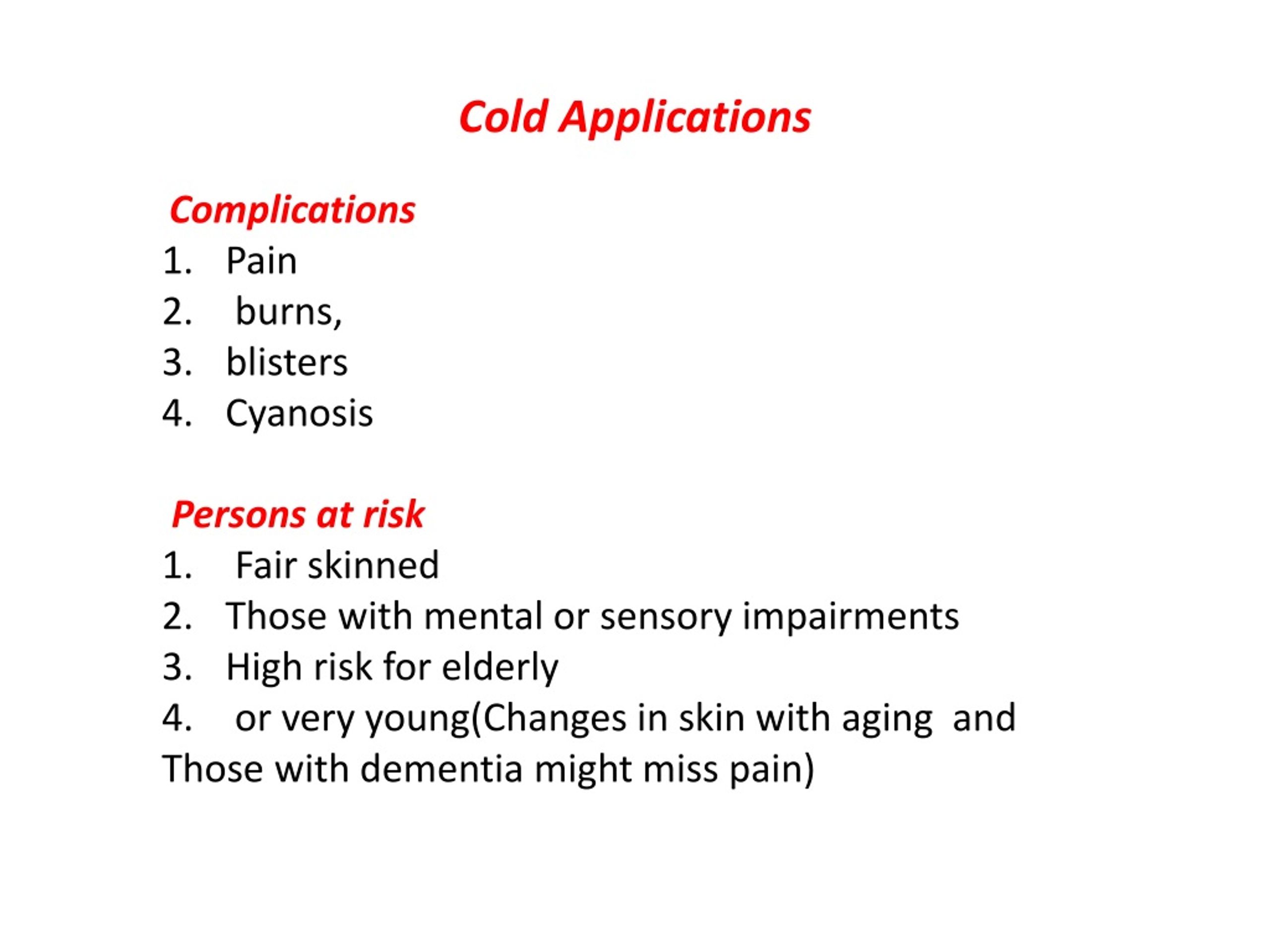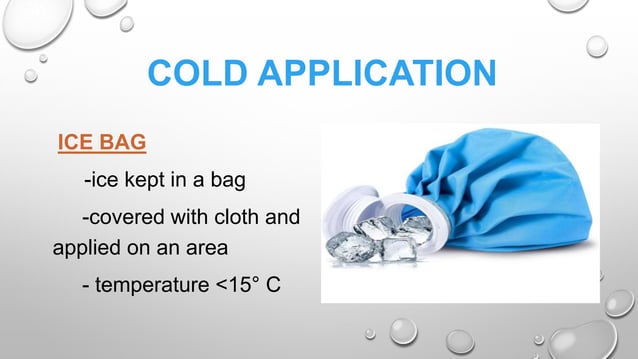Which Of The Following Is True About Applying Cold Applications

Applying cold to injuries and ailments is a common practice, but understanding the nuances of its application is crucial for effective treatment. Misconceptions abound regarding when, where, and how cold applications should be used, leading to potential ineffectiveness or even harm. This article delves into the scientifically supported truths about cold application to dispel myths and provide clarity on best practices.
At its core, cold therapy, also known as cryotherapy, aims to reduce inflammation and pain. However, the effectiveness hinges on several factors, including the type of cold application, duration, and the individual's specific condition. Ignoring these variables can lead to unintended consequences, highlighting the need for evidence-based guidelines.
The Truth About Cold Application
Understanding Physiological Effects
Cold application primarily works by constricting blood vessels in the affected area. This vasoconstriction reduces blood flow, thereby minimizing swelling and inflammation. Consequently, nerve activity is also reduced, leading to a decrease in pain perception.
The key to maximizing these benefits lies in understanding the extent and duration of the cold exposure. Too little, and the desired effects won't be achieved; too much, and you risk tissue damage.
Debunking Common Myths
One widespread misconception is that cold should be applied immediately and continuously after any injury. While early application is beneficial, continuous application can impede healing.
Prolonged exposure can paradoxically increase inflammation and delay the recovery process. According to the American Academy of Orthopaedic Surgeons, intermittent application is generally recommended.
Another myth is that any cold source is equally effective. The type of cold application, whether it's ice packs, cold water immersion, or cryotherapy devices, matters. The optimal choice depends on the location and severity of the injury.
Best Practices for Application
The RICE protocol (Rest, Ice, Compression, Elevation) remains a widely accepted guideline. However, the "Ice" component requires careful consideration. Apply cold packs or ice wrapped in a towel for no more than 15-20 minutes at a time.
Repeat this process several times a day, allowing the skin to return to its normal temperature in between applications. Avoid direct contact with ice to prevent frostbite or skin damage.
For larger areas, cold water immersion might be more suitable. Ensure the water is cold but not painfully so, and limit immersion time to the recommended duration. Always monitor the skin for signs of excessive cold exposure, such as redness, numbness, or blistering.
When Cold is Contraindicated
Cold application is not universally beneficial. Individuals with certain conditions, such as Raynaud's phenomenon or cold urticaria, should avoid cold therapy.
Furthermore, cold is often contraindicated in individuals with impaired circulation or sensory deficits, as it may exacerbate these conditions. A consultation with a healthcare professional is essential before starting cold therapy.
"Always err on the side of caution," advises Dr. Emily Carter, a sports medicine physician at the Mayo Clinic. "If you're unsure whether cold therapy is appropriate for your condition, seek medical advice."
The Role of Professional Guidance
For complex injuries or chronic pain conditions, professional guidance is paramount. Physical therapists and other healthcare providers can assess the specific needs of the individual and develop a tailored treatment plan.
This plan may incorporate various modalities, including cryotherapy, alongside other therapeutic interventions. The goal is to optimize healing and restore function.
The Long-Term Impact
Proper understanding and application of cold therapy can significantly improve outcomes for individuals recovering from injuries or managing chronic pain. By dispelling myths and adopting evidence-based practices, we can harness the full potential of this simple yet powerful tool.
Ultimately, the effectiveness of cold application lies in informed decision-making and adherence to established guidelines. Always prioritize safety and seek professional advice when needed.

